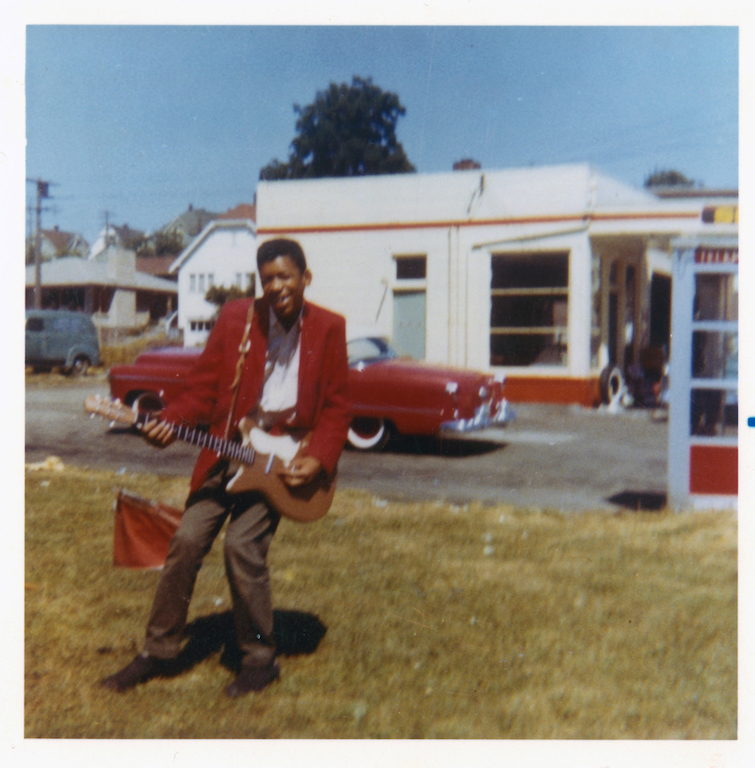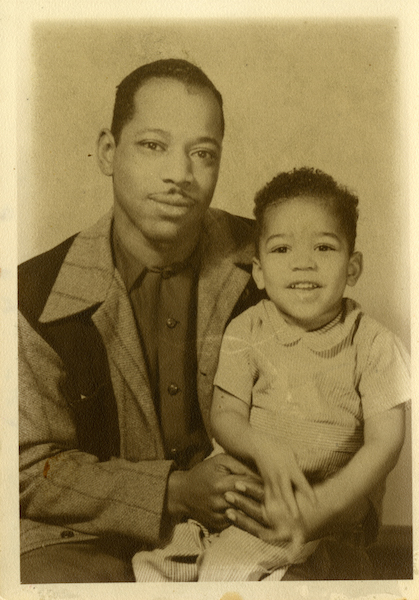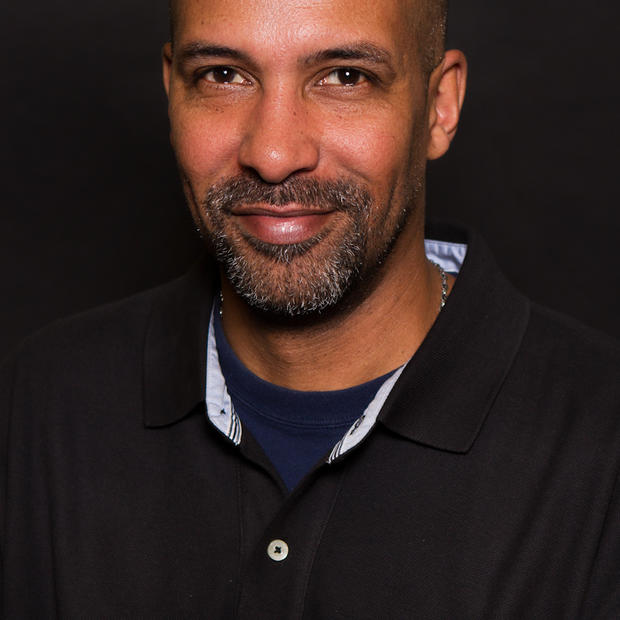For those unaware, Bold As Love lets it be known the story of the Hendrix name and Seattle music began well before Hendrix’s birth in 1942. Local Black musicians and performers, including Bertram Philander Ross Hendrix and Zenora Moore, Jimi’s grandparents, helped usher in a scene that in the 1920s dominated Jackson Street and the south end of downtown at venues like the 908 and the Black and Tan nightclubs.
The display highlights Hendrix’s quintessential experience growing up in the Central District — from a photo of 5-year-old Jimi at a family picnic at Leschi Park to some of his impressive drawings that include what appears to be the Miss Circus Circus hydroplane. Hendrix’s letterman patches in football from Meany Junior High (via school district busing) are also reminders of his deep Seattle roots, which connected with me even more. Like Hendrix, I also graduated from Garfield High. And here I was, taking in his story in a museum building that once was the Colman School — where I attended middle school.
Hendrix was exposed to music at an early age by his father, James “Al” Hendrix. His love of string instruments started out with a broom, which he would play in front of his dad. Then he moved onto a one-string ukulele and eventually, the guitar. Incredibly, he never had any formal musical training — he was self-taught while closely listening to the sounds of blues and jazz that played at home. His individual fashion sense, for which he would become known, and his amazing live performances were tributes to his grandmother’s background in vaudeville.

As Hendrix came of musical age in his teens, he formed several bands, including The Velvetones, James Thomas & The Tomcats, and The Rocking Kings. Upon graduating from Garfield High School, Hendrix enlisted in the U.S. Army in 1961. Following an honorable discharge, he began playing a variety of gigs around the country as a side man guitarist, but dreamed of more.
One consistent aspect of Seattle music over time has been the willingness to take creative risks and be true to one’s own individual style and flavor. Some have linked this dynamic at least in part to our city’s location. Murray Foreman, in the book That’s The Joint! The Hip-Hop Studies Reader, noted, “In an interesting spatial inversion, Bruce Pavitt, co-founder of the alternative-oriented Sub Pop label, actually regarded Seattle’s spatial marginality as a positive factor for local musicians, stating that, ‘one advantage Seattle has is our geographical isolation. It gave a group of artists a chance to create their own sound, instead of feeling pressured to copy others’.”
This was definitely the case with local rappers such as Sir Mix-A-Lot, who during the tidal wave that was "gangsta" rap in the late 1980s, used mace to protect a woman from her physically abusive boyfriend in “Posse On Broadway,” and Macklemore, whose biggest songs, “Thrift Shop” and “Same Love,” went directly against bling and homophobia, two of mainstream hip-hop’s longest held cultural norms.
The exhibit makes clear that Hendrix embraced this mindset. One panel states, “Even though he meticulously listened to Buddy Holly, Elmore James, and BB King, Jimmy was determined to make his own style of music. ‘I didn’t try to copy anybody. Those were just the people who gave me the feeling to get my own thing together.’ ” While finding his artistic legs in the mid-1960s, Hendrix arrived in New York City. Another panel notes, “Harlem’s Rhythm & Blues scene proved to be a bust. No one really ‘got’ Jimmy’s style or his music.” This began to change when he moved to London, England, where his career took off. After scoring hits in the United Kingdom, Hendrix reached No. 1 in the U.S. with his 1968 album Electric Ladyland.

Being the world’s highest paid performer at the time, he headlined the Woodstock Festival in upstate New York in August 1969, where he debuted his groundbreaking electric guitar rendition of the “Star Spangled Banner.” Already known among rock musicians and their fans, Woodstock introduced Hendrix to a worldwide audience. Just over a year after that performance, Hendrix died in London of a drug overdose on Sept. 17, 1970, at age 27. His body was flown back to Seattle, where the Hendrix family still resided, and buried at Greenwood Memorial Park in Renton.
Jimi Hendrix — the proudly self-described “West Coast Seattle Boy” who played shows at the Seattle Center Coliseum and Sicks’ Stadium, who famously said, “When the power of love overcomes the love of power, the world will know peace.”
As the much-discussed gentrification of local communities continues to threaten the deep and rich history of neighborhoods like the Central District, institutions such as NAAM and exhibitions like Bold As Love remind us of the people who have made Seattle a world-class city and cultural capital.



